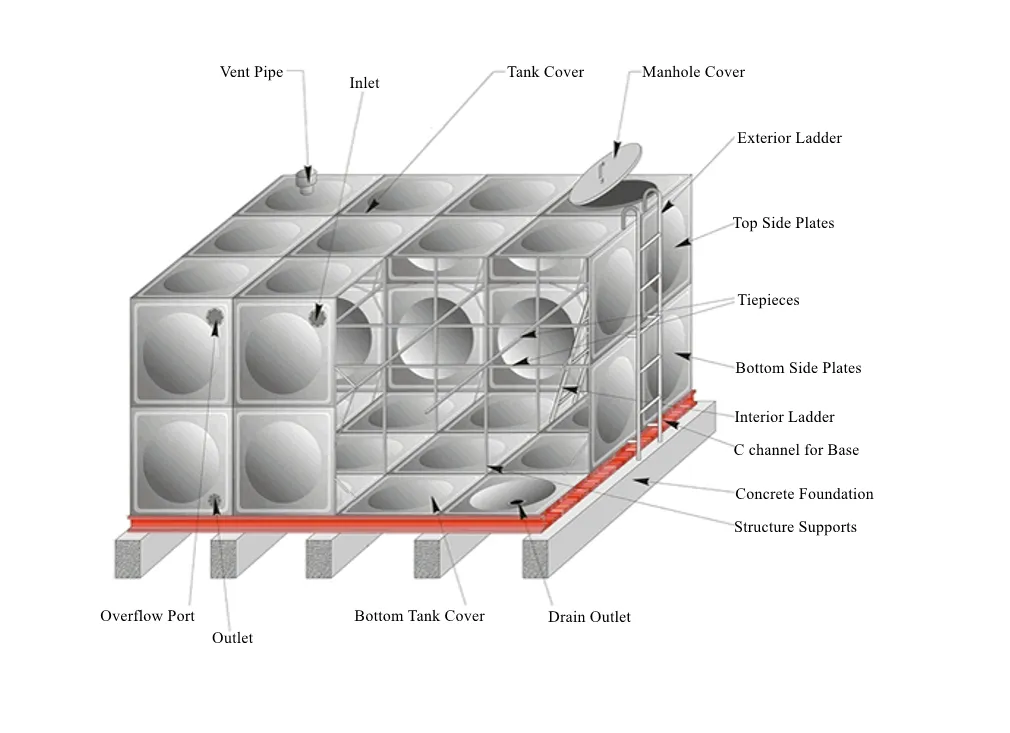loading...
- No. 9, Xingyuan South Street, Dongwaihuan Road, Zaoqiang County, Hengshui, Hebei, China
- admin@zjcomposites.com
- +86 15097380338
- Welcome to visit our website!
Exploring the Benefits of FRP Stair Solutions for Modern Architecture
Understanding FRP Stair Systems Innovation in Design and Engineering
In recent years, the construction industry has witnessed a surge in the utilization of innovative materials that not only improve structural integrity but also enhance aesthetic appeal. One such advancement is the use of Fiber Reinforced Polymer (FRP) in stair systems. FRP stair systems are gaining popularity due to their unique properties, making them an excellent choice for various applications, ranging from residential buildings to industrial facilities.
What is FRP?
Fiber Reinforced Polymer is a composite material made from a polymer matrix reinforced with fibers, typically glass, carbon, or aramid. The combination of these materials results in a lightweight yet high-strength product that exhibits excellent durability and corrosion resistance. FRP's intrinsic properties make it particularly suited for challenging environments such as waterfront constructions, chemical plants, and even public infrastructures.
Advantages of FRP Stair Systems
1. Lightweight and High Strength One of the most significant advantages of FRP stair systems is their low weight compared to traditional materials like steel and concrete. This characteristic facilitates easier transportation and installation, reducing labor costs. Despite being lightweight, FRP is incredibly strong and can withstand substantial load-bearing requirements.
2. Corrosion Resistance FRP does not corrode like metal or degrade like wood when exposed to moisture, chemicals, or harsh environments. This makes it an ideal choice for outdoor, industrial, and marine applications, where traditional materials may fail over time, leading to high maintenance costs and safety hazards.
3. Design Flexibility FRP can be molded into various shapes and sizes, providing designers and architects with the flexibility to create visually appealing and functional stair systems. This potential for customization allows for innovative design solutions that can meet specific aesthetic and functional requirements.
4. Low Maintenance Due to its resistance to corrosion and degradation, FRP stair systems require minimal maintenance. Unlike conventional materials that may need regular treatments or repairs to maintain their structural integrity, FRP can retain its quality and appearance over time, leading to cost savings in the long run.
frp stair

5. Safety Features FRP stair systems can be designed to incorporate anti-slip surfaces and other safety features, making them a safer option in environments where slips and falls are a concern. This is particularly important in industrial settings where workers are often exposed to hazardous conditions.
Applications of FRP Stair Systems
FRP stair systems are versatile and can be used in various sectors. Their applications include
- Industrial Facilities Many manufacturing and processing plants opt for FRP stairs to ensure worker safety while benefitting from the material's durability in harsh environments.
- Marine Structures In marine applications, where exposure to saltwater and moisture can compromise conventional materials, FRP provides a long-lasting solution.
- Transportation Hubs Airports, train stations, and other transportation facilities are increasingly using FRP for stair systems due to its lightweight properties and aesthetic adaptability.
- Architectural Settings In commercial and residential construction, FRP can be used for interior and exterior staircases, allowing for creative designs that enhance the overall appeal of the space.
Conclusion
As the construction industry continues to evolve, the adoption of advanced materials like Fiber Reinforced Polymer will play a crucial role in shaping the future of building design and safety. The benefits of FRP stair systems—lightweight, corrosion-resistant, low maintenance, and versatile—make them an excellent option for various applications. As architects and engineers increasingly recognize the advantages of FRP, we can expect to see a growing presence of these innovative stair systems in modern architecture, embodying not just functionality but also a commitment to sustainability and safety. With FRP, the future of stair design is not only bright but also resilient.
-
The Rise of FRP Profiles: Strong, Lightweight, and Built to LastNewsJul.14,2025
-
SMC Panel Tanks: A Modern Water Storage Solution for All EnvironmentsNewsJul.14,2025
-
GRP Grating: A Modern Solution for Safe and Durable Access SystemsNewsJul.14,2025
-
Galvanized Steel Water Tanks: Durable, Reliable, and Ready for UseNewsJul.14,2025
-
FRP Mini Mesh Grating: The Safer, Smarter Flooring SolutionNewsJul.14,2025
-
Exploring FRP Vessels: Durable Solutions for Modern Fluid HandlingNewsJul.14,2025
-
GRP Structures: The Future of Lightweight, High-Performance EngineeringNewsJun.20,2025
